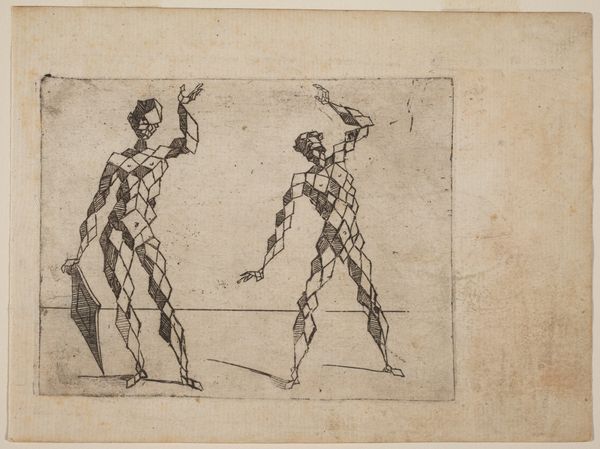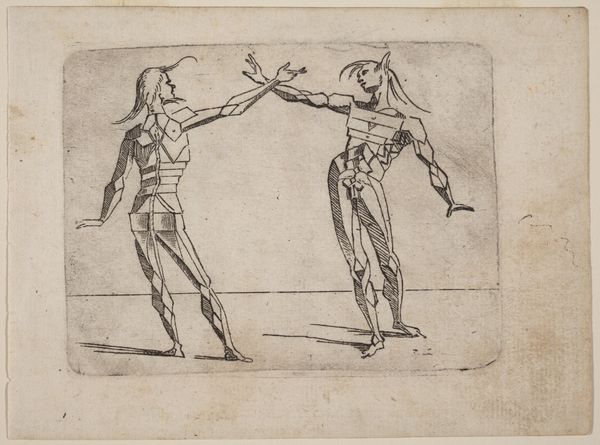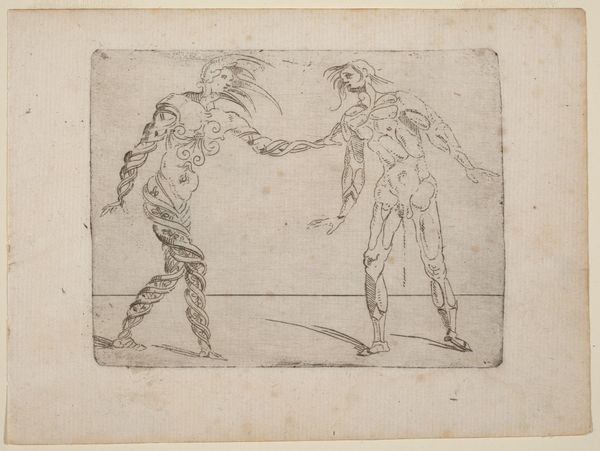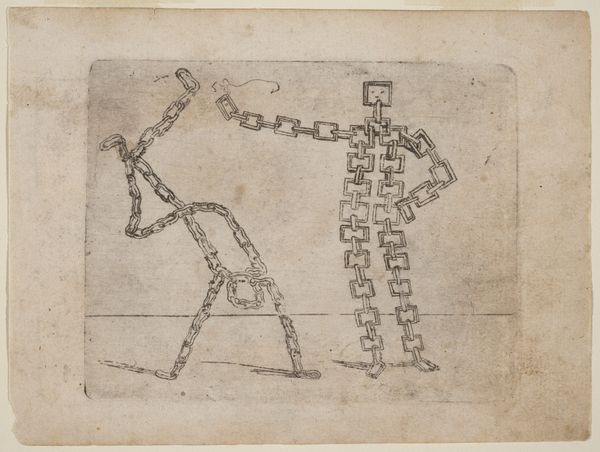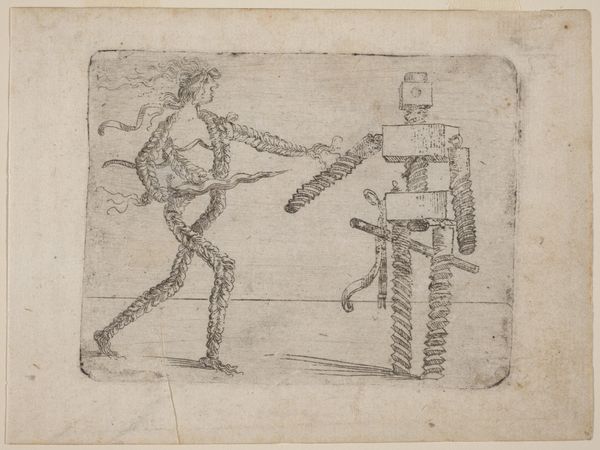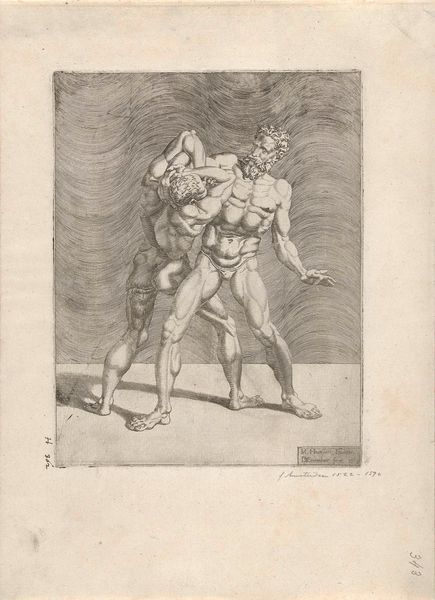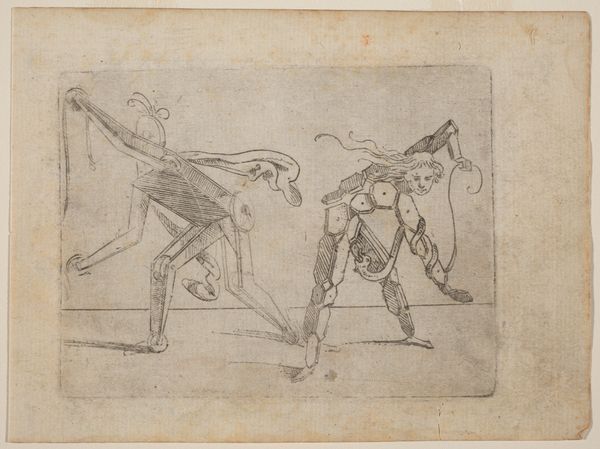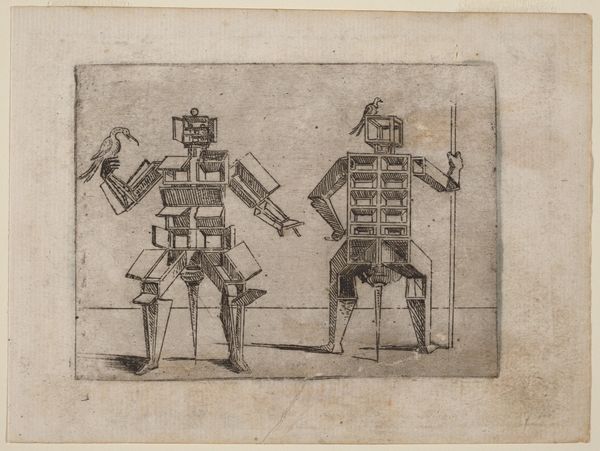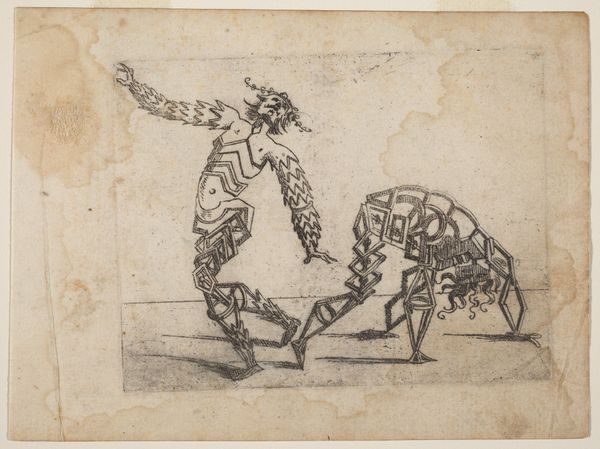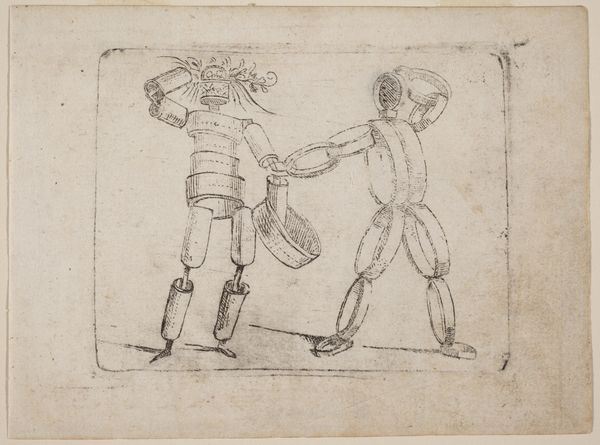
print, etching
#
allegory
# print
#
etching
#
mannerism
#
figuration
#
geometric
Copyright: National Gallery of Art: CC0 1.0
Curator: Here we have "From 'Bizzarie di varie Figure'" crafted in 1624 by Giovanni Battista Bracelli, a print employing etching. I’m immediately struck by the peculiar geometric forms. Almost like figures constructed from a child’s building blocks, yet with a haunting presence. Editor: Yes, it is immediately the "how" that jumps out. This is about materiality and method; consider how etching allows Bracelli to produce such a wealth of lines to build the figure's dimension from nearly flat surfaces. The craft belies the almost absurd figures and the narrative they are building together. Curator: I concur, the execution of the print reveals much about its structural components, doesn't it? Look closely at the composition, it is like figures deconstructed into rhomboid modules—very much in the Mannerist vein of emphasizing artifice over naturalism. Do you find it evokes, perhaps, a dialogue about form? Editor: Dialogue indeed. It's not just about the end product, but about the process—etching, in particular. The materials matter greatly. Paper and ink come together in this very reproducible and portable form, in contrast to fresco and other courtly artistic materials; here, we see geometry in social practice through a more intimate method of production. And do not discount the figures themselves. Curator: Ah, tell me more. The allegory? Editor: Think of commedia dell'arte, costumes, and character—the very act of wearing these geometric shapes suggests a certain performativity or construction of social role through art. Each figure then stands not just for forms, but for the figures themselves—and by the materials of printmaking, made broadly available and newly visible within Italian life. Curator: So you are viewing this work, through its materials, as not just Mannerist figuration but nearly radical—its material execution democratizing representation, breaking traditional strictures in both form and mode of artistic circulation? Editor: Precisely. The availability of print, of line as structure, allows it a kind of structural availability too. We look at process to see social form. Curator: Thank you for providing insight into the materials. I think it is rewarding to analyze how Bracelli’s forms stand as more than just line and shade—instead as almost tangible statements in a wider dialogue. Editor: Likewise; let’s always make certain that our analyses consider not just form, but also process. We might do worse than starting any encounter with art from consideration of "how?" and of what materials?
Comments
No comments
Be the first to comment and join the conversation on the ultimate creative platform.
